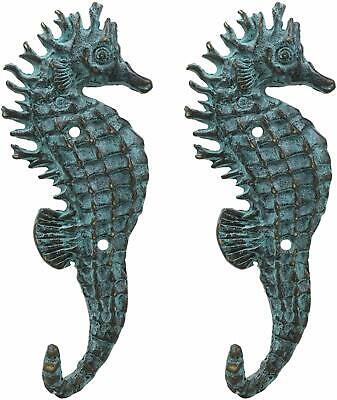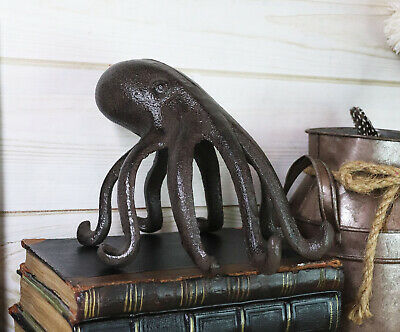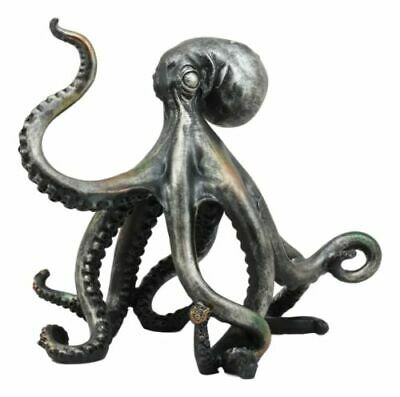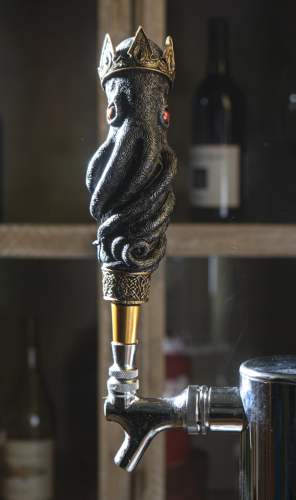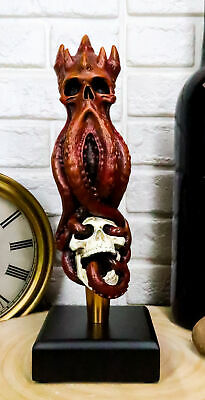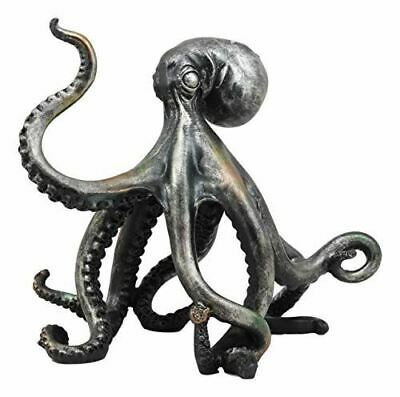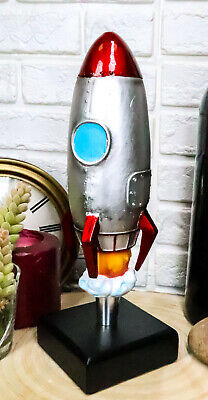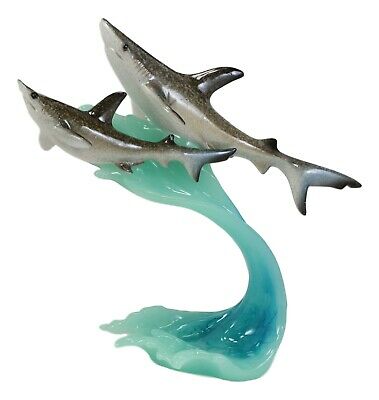-40%
Sea Animal Set Cuttlefish & Octopus & Squid Specimen in Clear Lucite Block KCD21
$ 23.76
- Description
- Size Guide
Description
Sea Animal Collection Set - Octopus, Cuttlefish and SqiudA set of 3 real Sea Animals (Common Octopus - Octopus vulgaris, Mimika Bobtail Cuttlefish - Euprymna morsei and Pacific Flying Squid –Todarodes pacificus) specimens encased in rectangular indestructible,transparent lucite block. Safe,authentic and completely unbreakable product put real Specimens right at your fingertips!
Anyone can safely explore the Specimens from every angle.
It is clear enough for microscope observation.
Length of the Octopus from head to bottom is 4.8 cm(1.9 inch).
Length of the Cuttlefish body is 3.7 cm(1.5 inch).
Allaboutlearning
Sea Animal Set Cuttlefish & Octopus & Squid Specimen in Clear Lucite Block KCD21
Sea Animal Collection Set - Octopus, Cuttlefish and Sqiud
A set of 3 real Sea Animals
(
Common Octopus
-
Octopus vulgaris,
Mimika Bobtail Cuttlefish -
Euprymna morsei
and Pacific Flying Squid –
Todarodes pacificus
)
specimens encased in rectangular indestructible,transparent lucite block. Safe,authentic and completely unbreakable product put real Specimens right at your fingertips!
Anyone can safely explore the Specimens from every angle.
It is clear enough for microscope observation.
Length of the Octopus from head to bottom is 4.8 cm(1.9 inch).
Length of the Cuttlefish body is 3.7 cm(1.5 inch).
Length of the squid body is 6.5 cm(2.6 inch).
Size of the lucite block is 165x80x20 mm(6.5x3.1x0.8 inch).
Weight of the block is 300 g and 350 g with packing box.
It is an ideal learning aid for students and kids and also a very good collectible item for every body.
This is a handmade real animal specimen craft. Each one will be a bit different (specimen size, color and posture) even in the same production batch.
The pictures in the listing are just for reference as we are selling multiple pieces with same pictures.
***
Common Octopus -
Octopus vulgaris
Class: Cephalopoda Order: Octopoda Family: Octopodidae Genus: Octopus Species: vulgaris
Length: 25 - 36 inches
Weight: 10 - 15 lbs
Offspring: 100000 - 500000
Life Span: 1 - 2 years
The Common Octopus reaches 24 to 36 inches in length. The arms are lined with suckers. The skin is smooth and has special pigment cells that make it possible for the octopus to blend in with the surroundings. These pigment cells have three bags filled with different colors, which are adjusted until the background is matched. Coloration reflects the octopus mood. White is for fear, red is for anger, and brown is the usual color. The octopuses lack any internal shell. Their closest relatives are the chambered nautilus, cuttlefish and squids.
uckers of the males. Females are difficult to identify.
Mimika Bobtail Cuttlefish -
Euprymna morsei
Class: Cephalopoda Order: Sepiolida
Family: Sepiolidae
Subfamily: Sepiolinae Genus: Euprymna
Distribution
: Central Indo-Pacific to Japan
Habitat
: benthopelagic, coastal
Length
: Up to 40 mm mantle length.
Common Name (s)
• Mimika Bobtail (English)
• Japanese Bobtail Squid (English)
Importance:
Commercial (Fisheries)
Size: Max length 4.0 cm ML (male)
E. morsei is benthic (meaning bottom-dwelling,) and forages for crustaceans in sandy and muddy seafloors all around western Asia and Indonesia.
Predator:
Finfishes (Mustelus griseus, Triakis scyllium)
They are molluscs (Phylum Mollusca) like snails, slugs and clams; and cephalopods (Class Cephalopoda) which include octopuses. They belong to the Suborder Sepiolida. Bobtail squids belong to the Family Sepiolidae while Bottletail squids belong to the Family Sepiadariidae.
Features:
3-6cm. These squids are generally rather spherical with a pair of rounded fins that make them look a little like an aquatic version of Dumbo the Flying Elephant! These squids can only be positively identified by examining the arm and suckers of the males. Females are difficult to identify.
Squids in this group tend to be found mostly on the sea bottom, generally in sandy or muddy habitats where they lie buried during the day. They use their broad fins to bury themselves, and use their funnel to blow sand and arms to rake sand over their head. At night, they come out to hunt.
Some bobtail squids from the Family Sepiolidae have a rudimentary shell, many have light-emitting organs so that they glow in the dark. This actually camouflages them from bottom dwelling predators which look upwards for prey. The glowing body of a bobtail squid allows it to blend in a moonlit sky, instead of appearing as an obvious dark shadow. There are more than 50 species of bobtail squids found throughout the world from the Arctic sea to temperate and tropical waters.
Bottletail squids from the Family Sepiadariidae can produce slime from special glands on the underside of their body. They have kidney shaped (rather than circular) fins and lack light emitting organs. There are only about 8 described species of bottletail squids.
Pacific Flying Squid –
Todarodes pacificus
Phylum:
Mollusca
Class:
Cephalopoda
Subclass:
Coleoidea
Order:
Teuthida
Family:
Ommastrephidae
Genus:
Todarodes
Species:
T. pacificus
The
Pacific flying squid
Todarodes pacificus
, is a squid of the family Ommastrephidae. This animal lives in the northern Pacific Ocean, in the area surrounding Japan, along the entire coast of China up to Russia, then spreading across the Bering Straight over towards the lower coast of Alaska and the coast of Canada. They tend to cluster around the central region of Vietnam.
Adult squid have several distinguishing features. The mantle encloses the visceral mass of the squid, and has two fins, which are not the primary method of propulsion. Instead, the squid has a siphon: a muscle which takes in water from one side, and pushes it out the other side: jet propulsion. The squid has eight arms and two tentacles with suction cups along the backs. In between the arms sits the mouth, or beak. Inside the mouth is a tooth-tongue-like appendage called the radula. Squid have ink sacs, which they use as a defense mechanism against possible predators. Squid also have three hearts.
The age of a squid can be determined on the basis of its growth rings, or statoliths, when additions are appended daily to the balance organs in the back of the squid’s head. This species of squid can weigh up to 0.5 kg. Mantle length in females can go up to 50 cm; males are smaller.
It can live anywhere from 5° to 27°C, and tend to inhabit the upper layers of the ocean. They are short lived, only surviving about a year.
Within this year of life, the squid mature from larvae form, feed and grow, migrate, and at the end of their lives, congregate at the mating grounds, where they reproduce. Three subpopulations have been identified in Japanese waters. “The main group spawns in winter in the East China Sea, the second in autumn, west of Kyushu, and the third, minor group in spring/summer in the Sea of Japan as well as off northeastern Japan.”
"Their migration moves North then South, tending to follow the surface currents. The squid tend to travel in large schools of more or less uniform size [meaning] that it is often possible to follow the growth of cohorts from recruitment to spawning, although the earliest part of the life history is generally more difficult to study because the larvae are always pelagic and some are rarely caught".
Squid generally only live one year because as soon as they reproduce, they die. Males mature first, and “transfer their spermatophores on the still immature females.” Then, on the continuing journey south, the females “mature and spawn 300 to 4,000 small, elliptical or semi-spherical eggs.” The squid migrate together, and lay all their eggs in the same area where they were born. The eggs hatch into larvae after only 102–113 hours (somewhere around five days), depending on the water temperature.
It is believed that the planktonic larvae feed on phytoplankton and zooplankton until they grow large enough to begin feeding on fish. When the squid matures more, it will eat mainly fish and crustaceans, however, it will also resort to cannibalism, especially when trapped in nets together.
Item Specifics
Country/Region of Manufacture
China
Material
Resin
Type
Collector Plate
Country of Manufacture
China
Modified Item
No
Handmade
Yes
Payment
Payment: By Paypal
Shipping cost
Free shipping cost.
We send the goods to USA, Canada, UK, Australia, New Zealand, EU countries and some other European and Asian countries by E-express, a kind of fast postal service by Hong Kong Post. It usually takes about 6 to 10 working days for delivery.
We send the goods to other countries by registered airmail and will take about 8 to 14 working days for delivery.
Return policy
Returns: We accept returns with any reason in 30 days. Buyer will bear the return shipping cost.
Messages
We will answer messages in 24 hours during working days.
[ Policy
: This is the contents of your policies. You can add a banner for this policy as header and add text descriptions here. The text descriptions can be different Font Size, Font Color, Style and even graphics and icons are also accepted. ]
Allaboutlearning
Your best online business partner
Sea Animal Set Cuttlefish & Octopus & Squid Specimen in Clear Lucite Block KCD21
Sea Animal Collection Set - Octopus, Cuttlefish and Sqiud
A set of 3 real Sea Animals
(
Common Octopus
-
Octopus vulgaris,
Mimika Bobtail Cuttlefish -
Euprymna morsei
and Pacific Flying Squid –
Todarodes pacificus
)
specimens encased in rectangular indestructible,transparent lucite block. Safe,authentic and completely unbreakable product put real Specimens right at your fingertips!
Anyone can safely explore the Specimens from every angle.
It is clear enough for microscope observation.
Length of the Octopus from head to bottom is 4.8 cm(1.9 inch).
Length of the Cuttlefish body is 3.7 cm(1.5 inch).
Length of the squid body is 6.5 cm(2.6 inch).
Size of the lucite block is 165x80x20 mm(6.5x3.1x0.8 inch).
Weight of the block is 300 g and 350 g with packing box.
It is an ideal learning aid for students and kids and also a very good collectible item for every body.
This is a handmade real animal specimen craft. Each one will be a bit different (specimen size, color and posture) even in the same production batch.
The pictures in the listing are just for reference as we are selling multiple pieces with same pictures.
***
Common Octopus -
Octopus vulgaris
Class: Cephalopoda Order: Octopoda Family: Octopodidae Genus: Octopus Species: vulgaris
Length: 25 - 36 inches
Weight: 10 - 15 lbs
Offspring: 100000 - 500000
Life Span: 1 - 2 years
The Common Octopus reaches 24 to 36 inches in length. The arms are lined with suckers. The skin is smooth and has special pigment cells that make it possible for the octopus to blend in with the surroundings. These pigment cells have three bags filled with different colors, which are adjusted until the background is matched. Coloration reflects the octopus mood. White is for fear, red is for anger, and brown is the usual color. The octopuses lack any internal shell. Their closest relatives are the chambered nautilus, cuttlefish and squids.
uckers of the males. Females are difficult to identify.
Mimika Bobtail Cuttlefish -
Euprymna morsei
Class: Cephalopoda Order: Sepiolida
Family: Sepiolidae
Subfamily: Sepiolinae Genus: Euprymna
Distribution
: Central Indo-Pacific to Japan
Habitat
: benthopelagic, coastal
Length
: Up to 40 mm mantle length.
Common Name (s)
• Mimika Bobtail (English)
• Japanese Bobtail Squid (English)
Importance:
Commercial (Fisheries)
Size: Max length 4.0 cm ML (male)
E. morsei is benthic (meaning bottom-dwelling,) and forages for crustaceans in sandy and muddy seafloors all around western Asia and Indonesia.
Predator:
Finfishes (Mustelus griseus, Triakis scyllium)
They are molluscs (Phylum Mollusca) like snails, slugs and clams; and cephalopods (Class Cephalopoda) which include octopuses. They belong to the Suborder Sepiolida. Bobtail squids belong to the Family Sepiolidae while Bottletail squids belong to the Family Sepiadariidae.
Features:
3-6cm. These squids are generally rather spherical with a pair of rounded fins that make them look a little like an aquatic version of Dumbo the Flying Elephant! These squids can only be positively identified by examining the arm and suckers of the males. Females are difficult to identify.
Squids in this group tend to be found mostly on the sea bottom, generally in sandy or muddy habitats where they lie buried during the day. They use their broad fins to bury themselves, and use their funnel to blow sand and arms to rake sand over their head. At night, they come out to hunt.
Some bobtail squids from the Family Sepiolidae have a rudimentary shell, many have light-emitting organs so that they glow in the dark. This actually camouflages them from bottom dwelling predators which look upwards for prey. The glowing body of a bobtail squid allows it to blend in a moonlit sky, instead of appearing as an obvious dark shadow. There are more than 50 species of bobtail squids found throughout the world from the Arctic sea to temperate and tropical waters.
Bottletail squids from the Family Sepiadariidae can produce slime from special glands on the underside of their body. They have kidney shaped (rather than circular) fins and lack light emitting organs. There are only about 8 described species of bottletail squids.
Pacific Flying Squid –
Todarodes pacificus
Phylum:
Mollusca
Class:
Cephalopoda
Subclass:
Coleoidea
Order:
Teuthida
Family:
Ommastrephidae
Genus:
Todarodes
Species:
T. pacificus
The
Pacific flying squid
Todarodes pacificus
, is a squid of the family Ommastrephidae. This animal lives in the northern Pacific Ocean, in the area surrounding Japan, along the entire coast of China up to Russia, then spreading across the Bering Straight over towards the lower coast of Alaska and the coast of Canada. They tend to cluster around the central region of Vietnam.
Adult squid have several distinguishing features. The mantle encloses the visceral mass of the squid, and has two fins, which are not the primary method of propulsion. Instead, the squid has a siphon: a muscle which takes in water from one side, and pushes it out the other side: jet propulsion. The squid has eight arms and two tentacles with suction cups along the backs. In between the arms sits the mouth, or beak. Inside the mouth is a tooth-tongue-like appendage called the radula. Squid have ink sacs, which they use as a defense mechanism against possible predators. Squid also have three hearts.
The age of a squid can be determined on the basis of its growth rings, or statoliths, when additions are appended daily to the balance organs in the back of the squid’s head. This species of squid can weigh up to 0.5 kg. Mantle length in females can go up to 50 cm; males are smaller.
It can live anywhere from 5° to 27°C, and tend to inhabit the upper layers of the ocean. They are short lived, only surviving about a year.
Within this year of life, the squid mature from larvae form, feed and grow, migrate, and at the end of their lives, congregate at the mating grounds, where they reproduce. Three subpopulations have been identified in Japanese waters. “The main group spawns in winter in the East China Sea, the second in autumn, west of Kyushu, and the third, minor group in spring/summer in the Sea of Japan as well as off northeastern Japan.”
"Their migration moves North then South, tending to follow the surface currents. The squid tend to travel in large schools of more or less uniform size [meaning] that it is often possible to follow the growth of cohorts from recruitment to spawning, although the earliest part of the life history is generally more difficult to study because the larvae are always pelagic and some are rarely caught".
Squid generally only live one year because as soon as they reproduce, they die. Males mature first, and “transfer their spermatophores on the still immature females.” Then, on the continuing journey south, the females “mature and spawn 300 to 4,000 small, elliptical or semi-spherical eggs.” The squid migrate together, and lay all their eggs in the same area where they were born. The eggs hatch into larvae after only 102–113 hours (somewhere around five days), depending on the water temperature.
It is believed that the planktonic larvae feed on phytoplankton and zooplankton until they grow large enough to begin feeding on fish. When the squid matures more, it will eat mainly fish and crustaceans, however, it will also resort to cannibalism, especially when trapped in nets together.
Item Specifics
Country/Region of Manufacture :
China
Material :
Resin
Type :
Collector Plate
Country of Manufacture :
China
Modified Item :
No
Handmade :
Yes
Payment
Payment: By Paypal
Shipping cost
Free shipping cost.
We send the goods to USA, Canada, UK, Australia, New Zealand, EU countries and some other European and Asian countries by E-express, a kind of fast postal service by Hong Kong Post. It usually takes about 6 to 10 working days for delivery.
We send the goods to other countries by registered airmail and will take about 8 to 14 working days for delivery.
Return policy
Returns: We accept returns with any reason in 30 days. Buyer will bear the return shipping cost.
Messages
We will answer messages in 24 hours during working days.
[ Policy
: This is the contents of your policies. You can add a banner for this policy as header and add text descriptions here. The text descriptions can be different Font Size, Font Color, Style and even graphics and icons are also accepted. ]
Copyright of XXXXX. All right reserved.
Shop Category
Store Home
Minerals, Stones & Gemstones
◈ Display Specimens Set
◈ Stone Mix & Bulk Lots
◈ Single piece
Animal and plant specimens
◈ Collection Sets
◈ Life Cycle Specimen
◈ Animal Skeleton
◈ Laminated Specimen
◈ Insect single specimen
◈ Animal single specimen
◈ Plant Single Specimen
Animal & plant ornament
◈ Key ring
◈ Bracelet
◈ Necklace
◈ Hanger
◈ Cabochon
◈ Magnet
◈ Dome paperweight
Meteorite & Tektite
◈ Black Tektite - Single piece
◈ Black Tektite - Loose Lot
◈ Black Tektite - Crafts
Star Ruby & Sapphire
▷ Star Ruby
♢ Opaque Star Ruby
◈ Star Sapphire
Turquoise items
◈ Natural - cabochon
Other
Hot Item
Insect Cabochon Golden Scorpion Oval 18x25 mm on black bottom 2 pieces Lot
USD 12.00
Murder Hornet - 7 Seven Bee Wasp & Hornet Collection Set Education Specimen
USD 35.00
Murder Hornet Vespa Mandarinia Education Insect Specimen Clear Paperweight
USD 16.00
Insect Cabochon Golden Scorpion Oval 18x25 mm on white bottom 2 pieces Lot
USD 12.00
Insect Cabochon Black Scorpion Oval 18x25 mm on White bottom 2 pieces Lot
USD 12.00
Picture
New List Item
Insect Large Key Ring Murder Hornet Asian Giant Tiger Hornet YK83 Glow
USD 12.99
Silver Wired Black Tektite Stone Pendant 12.6 gram 37x18x17 mm
USD 17.99
Tumbled Lemon Jade Serpentine Stone 0.8 to 7.2 g small size pieces 120 gram Lot
USD 15.99
Insect Cabochon Spiny Spider Specimen Round 25 mm Clear 2 pieces Lot
USD 11.99
Collection Box Set 8 Flower in Clear Lucite Block Education Plant Specimen F2708
USD 37.99
Custom Item











